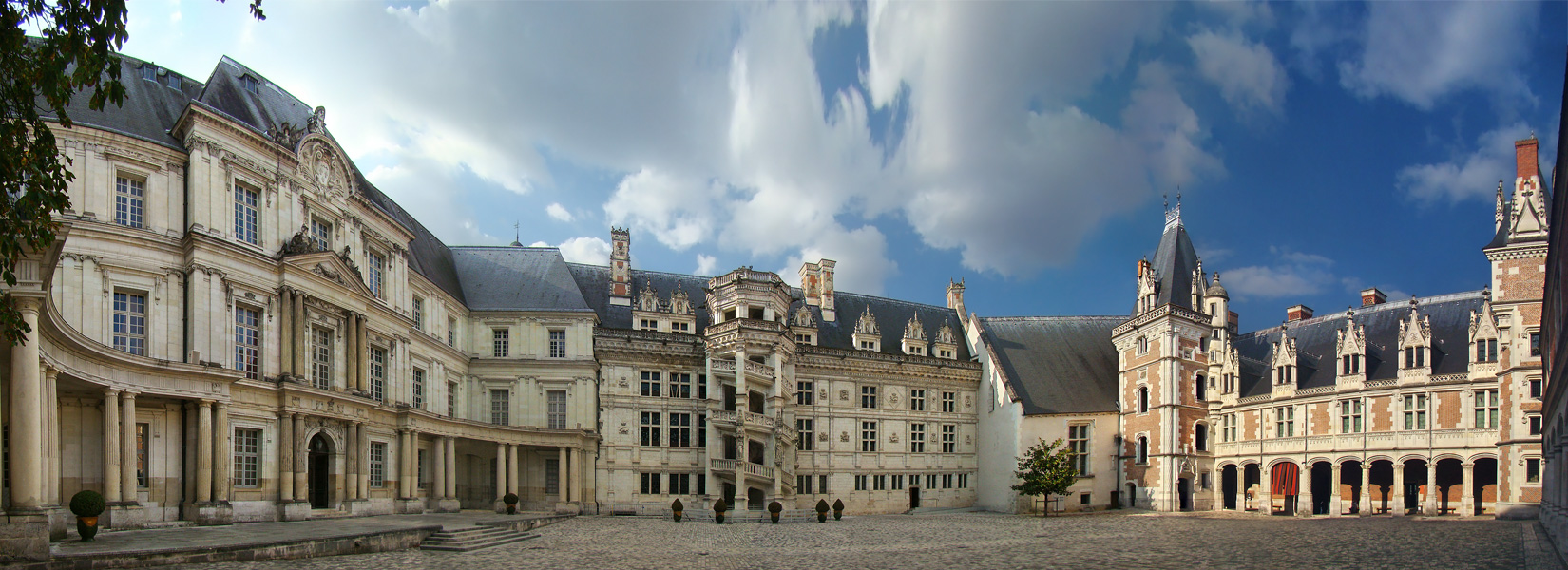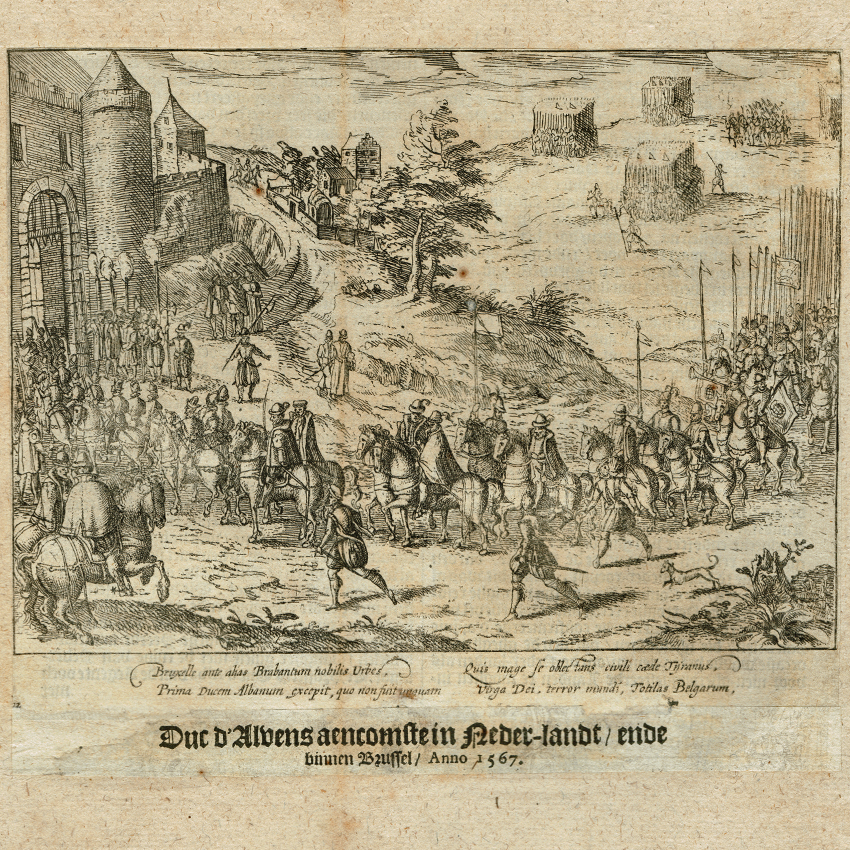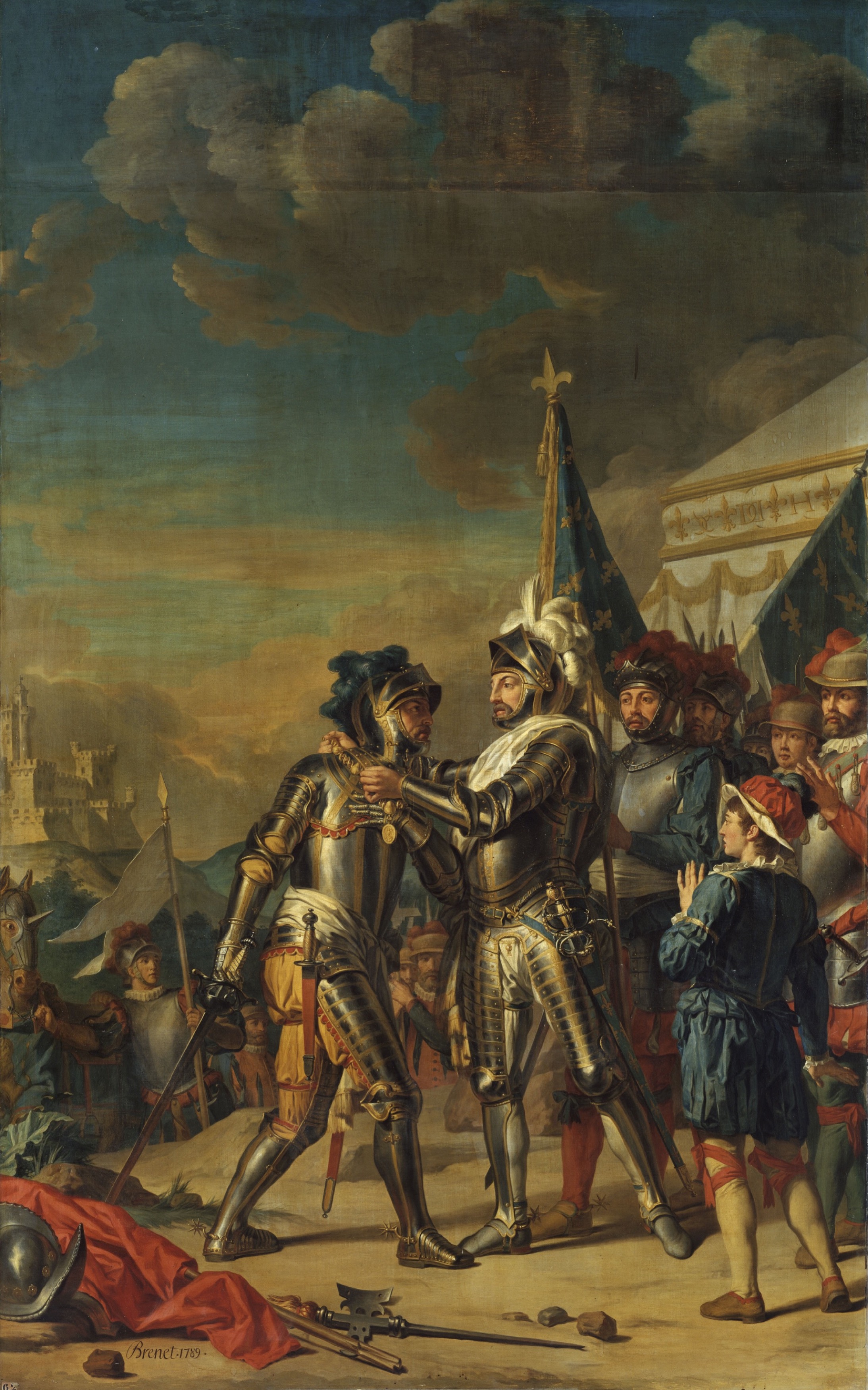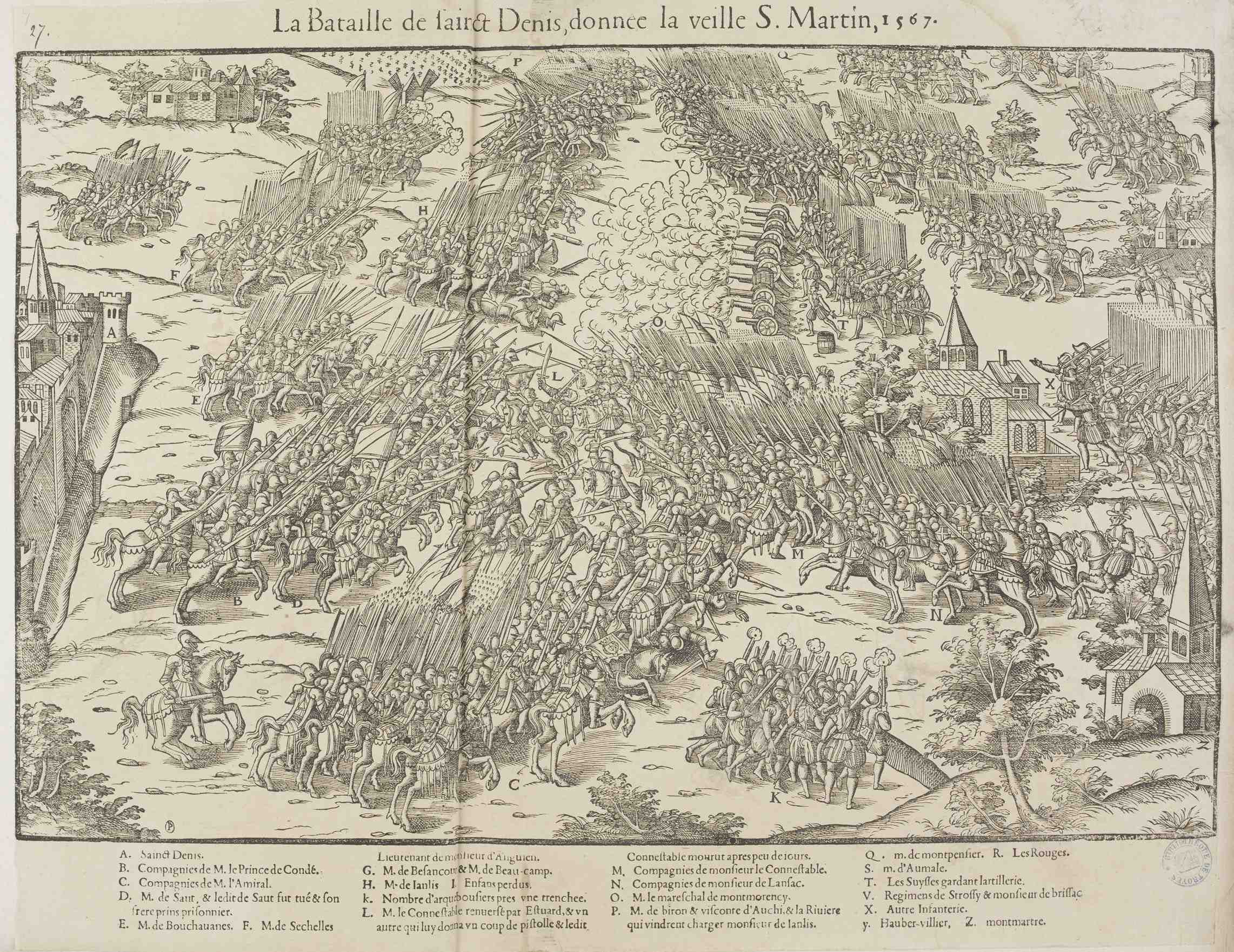|
Artus De Cossé-Brissac
Artus de Cossé-Brissac (1512–1582), lord of Gonnor and Comte de Secondigny, was a Marshal of France, an office he was elevated to in 1567. He served to administer the armies finances during the first of the French Wars of Religion and would lead the royal army in its pursuit of the Prince of Condé during the second civil war. His failure to catch the army led to his dismissal from overall royal command. During the third civil war he would again lead troops, beating a small Protestant force, before being defeated in the final days of the war at Arney-le-Duc. His long history of Politique leanings would push him into the orbit of the Malcontents for which he would be arrested in 1574. In 1576 he would be released and restored to favour before he died in 1582. Family and early life The Cossé family was ennobled in the fourteenth century. Artus de Cossé-Brissac was the brother of the Marshal Brissac who had been elevated to the title during the reign of Henri II of France, ... [...More Info...] [...Related Items...] OR: [Wikipedia] [Google] [Baidu] |
Marshal Of France
Marshal of France (french: Maréchal de France, plural ') is a French military distinction, rather than a military rank, that is awarded to generals for exceptional achievements. The title has been awarded since 1185, though briefly abolished (1793–1804) and for a period dormant (1870–1916). It was one of the Great Officers of the Crown of France during the and Bourbon Restoration, and one of the Grand Dignitaries of the Empire during the First French Empire (when the title was Marshal of the Empire, not Marshal of France). A Marshal of France displays seven stars on each shoulder strap. A marshal also receives a baton: a blue cylinder with stars, formerly fleurs-de-lis during the monarchy and eagles during the First French Empire. The baton bears the Latin inscription of ', which means "terror in war, ornament in peace". Between the end of the 16th century and the middle of the 19th century, six Marshals of France were given the even more exalted rank of Marshal General ... [...More Info...] [...Related Items...] OR: [Wikipedia] [Google] [Baidu] |
Catherine De'Medici
Catherine de' Medici ( it, Caterina de' Medici, ; french: Catherine de Médicis, ; 13 April 1519 – 5 January 1589) was an Florentine noblewoman born into the Medici family. She was Queen of France from 1547 to 1559 by marriage to King Henry II and the mother of French Kings Francis II, Charles IX, and Henry III. The years during which her sons reigned have been called "the age of Catherine de' Medici" since she had extensive, if at times varying, influence in the political life of France. Catherine was born in Florence to Lorenzo de' Medici, Duke of Urbino, and Madeleine de La Tour d'Auvergne. In 1533, at the age of 14, Catherine married Henry, the second son of King Francis I and Queen Claude of France. Catherine's marriage was arranged by her uncle Pope Clement VII. Henry excluded Catherine from participating in state affairs and instead showered favours on his chief mistress, Diane de Poitiers, who wielded much influence over him. Henry's death in 1559 thrust Cathe ... [...More Info...] [...Related Items...] OR: [Wikipedia] [Google] [Baidu] |
William The Silent
William the Silent (24 April 153310 July 1584), also known as William the Taciturn (translated from nl, Willem de Zwijger), or, more commonly in the Netherlands, William of Orange ( nl, Willem van Oranje), was the main leader of the Dutch Revolt against the Spanish Habsburgs that set off the Eighty Years' War (1568–1648) and resulted in the formal independence of the United Provinces in 1648. Born into the House of Nassau, he became Prince of Orange in 1544 and is thereby the founder of the Orange-Nassau branch and the ancestor of the monarchy of the Netherlands. In the Netherlands, he is also known as Father of the Fatherland (''Pater Patriae'') ( nl, Vader des Vaderlands). A wealthy nobleman, William originally served the Habsburgs as a member of the court of Margaret of Parma, governor of the Spanish Netherlands. Unhappy with the centralisation of political power away from the local estates and with the Spanish persecution of Dutch Protestants, William joined the D ... [...More Info...] [...Related Items...] OR: [Wikipedia] [Google] [Baidu] |
Picardy
Picardy (; Picard and french: Picardie, , ) is a historical territory and a former administrative region of France. Since 1 January 2016, it has been part of the new region of Hauts-de-France. It is located in the northern part of France. History The historical province of Picardy stretched from north of Noyon to Calais via the whole of the Somme department and the north of the Aisne department. The province of Artois ( Arras area) separated Picardy from French Flanders. Middle Ages From the 5th century, the area formed part of the Frankish Empire and, in the feudal period, it encompassed the six countships of Boulogne, Montreuil, Ponthieu, Amiénois, Vermandois and Laonnois.Dunbabin.France in the Making. Ch.4. The Principalities 888–987 In accordance with the provisions of the 843 Treaty of Verdun, the region became part of West Francia, the later Kingdom of France. The name "Picardy" derives from the Old French ''pic,'' meaning "pike", the characteristic weapon u ... [...More Info...] [...Related Items...] OR: [Wikipedia] [Google] [Baidu] |
Peace Of Longjumeau
The Peace of Longjumeau (also known as the Treaty of Longjumeau or the Edict of Longjumeau) was signed on 23 March 1568 by Charles IX of France and Catherine de' Medici. The edict brought to an end the brief second French Wars of Religion with terms that largely confirmed those of the prior edict of Amboise. Unlike the previous edict it would not be sent to the ''Parlements'' to examine prior to its publication, due to what the crown had felt was obstructionism the last time. The edict would not however last, and it would be overturned later in the year, being replaced by the Edict of Saint-Maur which outlawed Protestantism at the beginning of the third war of religion. Towards peace After their loss at the Battle of Saint-Denis the main Huguenot army fled eastwards in disarray, pursued by the royal army. In the wake of the battle, Charles IX sent out a letter to the rebel leadership, entreating the shattered Huguenots to lay down their arms in return for amnesty. Louis, Pri ... [...More Info...] [...Related Items...] OR: [Wikipedia] [Google] [Baidu] |
Blois
Blois ( ; ) is a commune and the capital city of Loir-et-Cher department, in Centre-Val de Loire, France, on the banks of the lower Loire river between Orléans and Tours. With 45,898 inhabitants by 2019, Blois is the most populated city of the department, and the 4th of the region. Historically, the city was the capital of the county of Blois, created on 832 until its integration into the Royal domain in 1498, when Count Louis II of Orléans became King Louis XII of France. During the Renaissance, Blois was the official residence of the King of France. History Pre-history Since 2013, excavations have been conducted by French National Institute of Preventive Archaeological Research (''INRAP'' in French) in Vienne where they found evidence of "one or several camps of late Prehistory hunter-gatherers, who were also fishermen since fishing traps were found there.. ..They were ancestors of the famous Neolithic farmer-herders, who were present in current France around 6,000 BC ... [...More Info...] [...Related Items...] OR: [Wikipedia] [Google] [Baidu] |
Orléans
Orléans (;"Orleans" (US) and , ) is a city in north-central France, about 120 kilometres (74 miles) southwest of Paris. It is the prefecture of the Departments of France, department of Loiret and of the Regions of France, region of Centre-Val de Loire. Orléans is located on the river Loire nestled in the heart of the Loire Valley, classified as a Loire Valley, World Heritage Site, where the river curves south towards the Massif Central. In 2019, the city had 116,269 inhabitants within its municipal boundaries. Orléans is the center of Orléans Métropole that has a population of 288,229. The larger Functional area (France), metropolitan area has a population of 451,373, the 20th largest in France. The city owes its ... [...More Info...] [...Related Items...] OR: [Wikipedia] [Google] [Baidu] |
Spanish Netherlands
Spanish Netherlands (Spanish: Países Bajos Españoles; Dutch: Spaanse Nederlanden; French: Pays-Bas espagnols; German: Spanische Niederlande.) (historically in Spanish: ''Flandes'', the name "Flanders" was used as a ''pars pro toto'') was the Habsburg Netherlands ruled by the Spanish branch of the Habsburgs from 1556 to 1714. They were a collection of States of the Holy Roman Empire in the Low Countries held in personal union by the Spanish Crown (also called Habsburg Spain). This region comprised most of the modern states of Belgium and Luxembourg, as well as parts of northern France, the southern Netherlands, and western Germany with the capital being Brussels. The Army of Flanders was given the task of defending the territory. The Imperial fiefs of the former Burgundian Netherlands had been inherited by the Austrian House of Habsburg from the extinct House of Valois-Burgundy upon the death of Mary of Burgundy in 1482. The Seventeen Provinces formed the core of the Habsburg N ... [...More Info...] [...Related Items...] OR: [Wikipedia] [Google] [Baidu] |
Fernando Álvarez De Toledo, 3rd Duke Of Alba
Fernando Álvarez de Toledo y Pimentel, 3rd Duke of Alba (29 October 150711 December 1582), known as the Grand Duke of Alba (, pt, Grão Duque de Alba) in Spain and Portugal and as the Iron Duke ( or shortly 'Alva') in the Netherlands, was a Spanish noble, general and diplomat. He was titled the 3rd Duke of Alba de Tormes, 4th Marquess of Coria, 3rd Count of Salvatierra de Tormes, 2nd Count of Piedrahita, 8th Lord of Valdecorneja, Grandee of Spain and a Knight of the Order of the Golden Fleece. His motto in Latin was ''Deo patrum nostrorum'' ("To the God of our fathers"). He was an adviser of King Charles I of Spain (Charles V, Holy Roman Emperor), and his successor, Philip II of Spain, Mayordomo mayor of both, member of their Councils of State and War, governor of the Duchy of Milan (1555–1556), viceroy of the Kingdom of Naples (1556–1558), governor of the Netherlands (1567–1573) and viceroy and constable of the Kingdom of Portugal (1580–1582). He represented Philip ... [...More Info...] [...Related Items...] OR: [Wikipedia] [Google] [Baidu] |
Gaspard De Saulx
Gaspard de Saulx, sieur de Tavannes (March 1509–June 1573) was a French Roman Catholic military leader during the Italian Wars and the French Wars of Religion. He served under four kings during his career, participating in the Siege of Calais (1558) and leading the royal army to victory in the third civil war at the Jarnac and Moncontour. A strong Catholic, he founded the confraternity of the holy ghost in 1567 which would be a template for other militant Catholic organisations across France. He died in 1573, shortly after the opening assassinations of the Massacre of Saint Bartholomew, which he had helped plan. Early life and family The Saulx family was well established in Dijon, Gaspard's great-grandfather having been a judge in the Paris ''Parlement'' and a councillor to the Duke of Burgundy. Gaspard was born in 1509 in the house Jean de Saulx had commissioned in 1412. He was the son of Jean de Saulx, baron of Sully, and od Marguerite de Tavannes, their second child of three. ... [...More Info...] [...Related Items...] OR: [Wikipedia] [Google] [Baidu] |
Battle Of Saint-Denis (1567)
The Battle of Saint-Denis was fought on 10 November 1567 between a Royalist army and Huguenot rebels during the second of the French Wars of Religion. Although their 74 year old commander, Anne de Montmorency, was killed in the fighting, the Royalists forced the rebels to withdraw, allowing them to claim victory. The only major conflict of the second phase, the battle came about when Montmorency attempted to break Condé's siege of Paris. The Huguenot army retreated towards the border, where they linked up with forces led by their ally John Casimir of the Palatinate-Simmern, before besieging Chartres in February 1568. The war ended shortly thereafter. Prelude to battle Paris invested After the failure of the Protestants to capture the king in the Surprise of Meaux, Charles IX and the queen mother rushed to Paris. Keen not to waste his mobilisation advantage, Conde made camp at Saint-Denis on 2 October, hoping to quickly starve the capital out before the full royal army co ... [...More Info...] [...Related Items...] OR: [Wikipedia] [Google] [Baidu] |
Surprise Of Meaux
The surprise of Meaux (''La surprise de Meaux'') was a failed coup attempt by leading aristocratic Huguenots which precipitated the second French War of Religion. Dissatisfied with their lot, and under the pretext of fear of extermination, Louis, Prince of Condé and Gaspard II de Coligny plotted to seize the king, Charles IX, while he was staying near Meaux. Alerted by the mustering of the Huguenots, the royal court made a dash for Paris, fighting off attempts to break through to them en route. Their plan foiled, the Huguenots laid siege to the city, beginning the second war. The event would be of lasting importance in the reputation it gave its architects for sedition. Between the wars Bayonne and Alba The first French Wars of Religion was brought to a close with the Edict of Amboise in 1563, which was later consolidated into a pacification edict. Despite this peace offering concessions to the Huguenots, the leading nobles of their faction remained suspicions as to the c ... [...More Info...] [...Related Items...] OR: [Wikipedia] [Google] [Baidu] |



.jpg)




